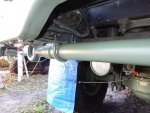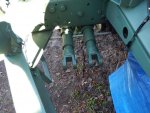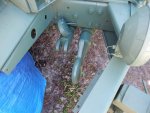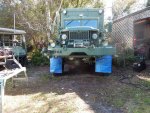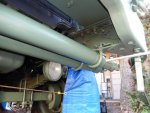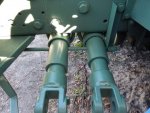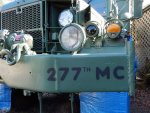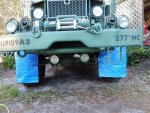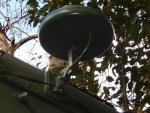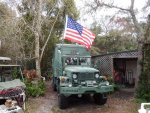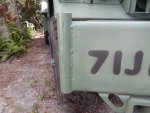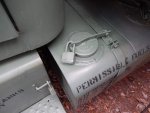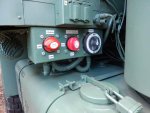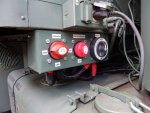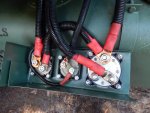The moment on the mounting hardware is fairly small due to the fact the cable winds on the bottom of the spool. It also doesn't change much as you go above or below horizontal with the line.
The winch manufacturer likely chose the mounting hardware size (as indicated by the holes) based on the performance of a bolt less than grade 8. And even then , they would use at least 3x or 5x factor of safety to account for fatigue stress and stupid people. (Or at least, the name brand winch they reverse engineered would have done all this design work).
If anything the grade 8 hardware will be the last thing to fail as the inferior castings on the winch exhibit sudden crack propagation due to porosity and poor fit and finish. The A36 steel that the plate is likely made out of should have plenty of strength in this application.
In hoisting and rigging, ASME typically requires that in the event of a severe overload, the load hook gently deforms to indicate an issue before anything suddenly breaks. This is true of lifting devices. I'm not as familiar with winching devices, but I've done engineering work for a company that builds hoists in the US. The mounting hardware is typically the last thing to fail and the most "overbuilt".
I say all this not to undermine your point, but to say that QJ's application is likely fine for most uses. If he were up upgrade his winch, then I would be concerned.
Even still, over time he may see just enough flex in that plate for his paint job to start spider cracking. Some additional steel to stiffen the plate and reinforce its connection to the frame would be beneficial for the service life of the mount.



